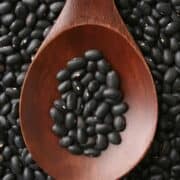
Have you been on and off different types of birth control for several years? Do you suffer from Polycystic Ovarian Syndrome (PCOS), PMS, hot flashes, fatigue, or notice that when not on birth control your cycle has been nowhere near regular? Or maybe you just feel off yourself and get blindsided by moodiness and irritability at strange times in your cycle. If any of these scenarios sound familiar, you might be interested in exploring the idea of balancing your hormones naturally to get yourself back on track. Did you know the foods you eat can influence the hormone patterns in your body? For years, many natural practitioners have used the concept of “seed cycling” to do just that.
What is Seed Cycling?
Seed cycling, for all of you out there (myself included) who like to avoid hormonal birth control when possible, is a focused and strategic way to use hormone-balancing foods to influence your own menstrual cycle – namely, flax, pumpkin, sunflower, and sesame seeds. I know – on the surface it seems silly to think that a bunch of seeds can affect your inner body enough to make your mood swings and bloating go away. But while there haven’t been published clinical trials on this as an intervention, there are countless anecdotal success stories. And, if you dig into the nutritional profile of each of the seeds individually, it is clear (and scientifically backed) that they have aspects that affect hormones and inflammation – which in turn will affect the processes in your body. As one example, unsaturated fatty acids, which are found in all 4 of the seed types, have been shown in animal studies to stimulate progesterone secretion, and in goats improved their fertility! (1)
So if you’ve already read my post on how birth control works, you are familiar with the key phases of your menstrual cycle, as well as the star hormones estrogen and progesterone and the role they play. Flax seeds, as a fiber-rich food, have a high concentration of lignans, which are a group of phytochemicals that can alter estrogen levels. While some people may be hesitant to raise their estrogen levels even further, flaxseed actually has a protective effect, leading to a higher ratio of the “good” estrogen, and suppressing the “bad” estrogen linked to cancer. (2) (3) Pumpkin seeds are very high in zinc, which is anti-inflammatory, (4) and is important for both men and women in their reproductive cycle. (5)
In the 2nd phase of your cycle, the luteal phase which follows ovulation, you want your body to build a nice thick uterine lining, done through progesterone release. Sunflower seeds are also a great source of Zinc as well as Vitamin E, which improves corpus luteum blood flow and serum progesterone levels. (6) Additionally, sesame ingestion has been found to improve blood lipid levels and antioxidant status in postmenopausal women. (7) Consistent flax seed intake has also been shown to lengthen this luteal phase cycle, compared to typical western low-fiber diets (8) which is helpful for fertility and as a proxy for your progesterone levels.
How to Start Seed Cycling
To do this well, you’ll first need to start tracking your cycle if you aren’t already. Essentially, you’ll be splitting your cycle into 2 halves, with the first half focused on flax and pumpkin seeds, and the 2nd half on sunflower and sesame seeds.
- On Day 1 (the first day of your period) through
day 14 of your cycle (or ovulation, depending on your own schedule),
- Eat 2-3 tablespoon raw, organic freshly ground flax seeds, and 2-3 tablespoon raw, organic pumpkin seeds each morning. This helps you to balance estrogen, which is really important at this stage.
- On day 15, or the day after ovulation
- Switch to 2-3 tablespoon of raw sunflower and raw sesame seeds each day through the end of your cycle. These help with stabilizing progesterone levels, key during this 2nd stage.
If your cycle is pretty irregular, or maybe you are postpartum or postmenopausal, you can still try seed cycling too. In these cases though, it might be easier to follow the moon calendar instead of your own cycle. You can use the new moon as “day 1” and start flax and pumpkin seeds each day. Then once the full moon appears, switch to the 2nd stage of sunflower and sesame seeds.
How long does this take?
This is always my first question – I like to know what I’m signing myself up for before I get too far into the process. Many women will notice the effects after just one month, but for some, it can take closer to three months to see improvement. (9) I should also mention, that this effort will be most effective if it’s done in concert with other healthy behaviors. Starting up seed cycling while still going out drinking multiple nights a week and eating takeout and late-night pizza will probably not have the same result compared to getting the sleep your body needs and feeding it the vegetables and nutrients it craves.
Where the rubber meets the road
Ok – so this might all sound great in theory, but once you get motivated and get shopping you may easily find yourself overwhelmed with questions. Do I buy whole flax seeds? Should I grind my own? Can I make them in batches? Does this mean I have to make a smoothie every morning before work? What if I’m allergic to sesame? The devil’s always in the details, right?
First, grinding the flax seeds does help absorption because you are increasing the surface area of the food, which makes it more effective internally than whole seeds. (10) You can grind enough for each week and store them in a jar, you just don’t want to do large quantities as they will start to oxidize once ground. With food allergies on the rise, it’s very possible that one or more of these ingredients might not agree with you. But don’t worry too much, you can still find some positive results even from just consistently taking one seed daily during that particular phase. The important thing is to use this as a guide, not a strict regimen – so focus on what you can do and put your energy towards that instead of things that may be limiting you. Mix them into a smoothie, throw some on salads or oatmeal in the morning, or if you’re feeling creative, make a fresh seed butter to smooth on toast! Do you feel like this is something you might try? Let me know how it goes!
References
- Coyral-Castel, S. et al. Effects of unsaturated fatty acids on progesterone secretion and selected protein kinases in goat granulosa cells. Domestic Animal Endocrinology. 2010. 38 (4): 272-83.
- Chang, V.C. et al. Effect of Dietary Flaxseed Intake on Circulating Sex Hormone Levels among Postmenopausal Women: A Randomized Controlled Intervention Trial. Nutrition and Cancer. 2019. 71(3): 385-398.
- Hutchins, A.M. et al. Flaxseed consumption influences endogenous hormone concentrations in postmenopausal women. Nutrition and Cancer. 2001. 39(1): 58-65.
- Wong, C.P. et al. Zinc deficiency enhanced inflammatory response by increasing immune cell activation and inducing IL6 promoter demethylation. Molecular Nutrition and Food Research. 2015. 59(5): 991-9.
- Favier, Alain Emile. The role of zinc in reproduction. Biological Trace Element Research. 1992. 32(1-3): 363-382.
- Takasaki, A. et al. Luteal blood flow and luteal function. Journal of Ovarian Research. 2009. 2:1.
- Wu, W.H. et al. Sesame ingestion affects sex hormones, antioxidant status, and blood lipids in postmenopausal women. The Journal of Nutrition. 2006. 136(5): 1270-5.
- Phipps, W.R. et al. Effect of flax seed ingestion on the menstrual cycle. Journal of Clinical Endocrinology and Metabolism. 1993. 775): 1215-9.
- Brighten, J. Seed Cycling for Hormone Balance. Dr. Jolene Brighten blog. Available from https://drbrighten.com/seed-cycling-for-hormone-balance/.
- Coulman, K.D. et al. Fatty acids and lignans in unground whole flaxseed and sesame seed are bioavailable but have minimal antioxidant and lipid-lowering effects in postmenopausal women. Molecular Nutrition & Food Research. 2009. 53(11): 1366-75.



















Tell Me What You Think